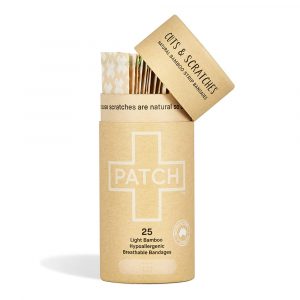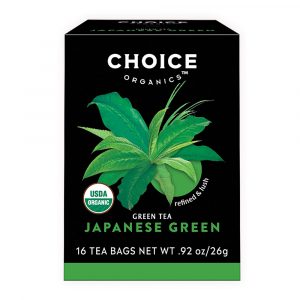8 Sneaky Sources Of Plastic & The Best Eco-Friendly Swaps
Plastic may be a convenience, but it fills up our landfills and pollutes our oceans. Aside from obvious sources of plastic, there are some surprising places that plastic hides in everyday household items. By swapping out the 8 items below with more sustainable alternatives, you can reduce your plastic footprint and have a positive impact on the planet!
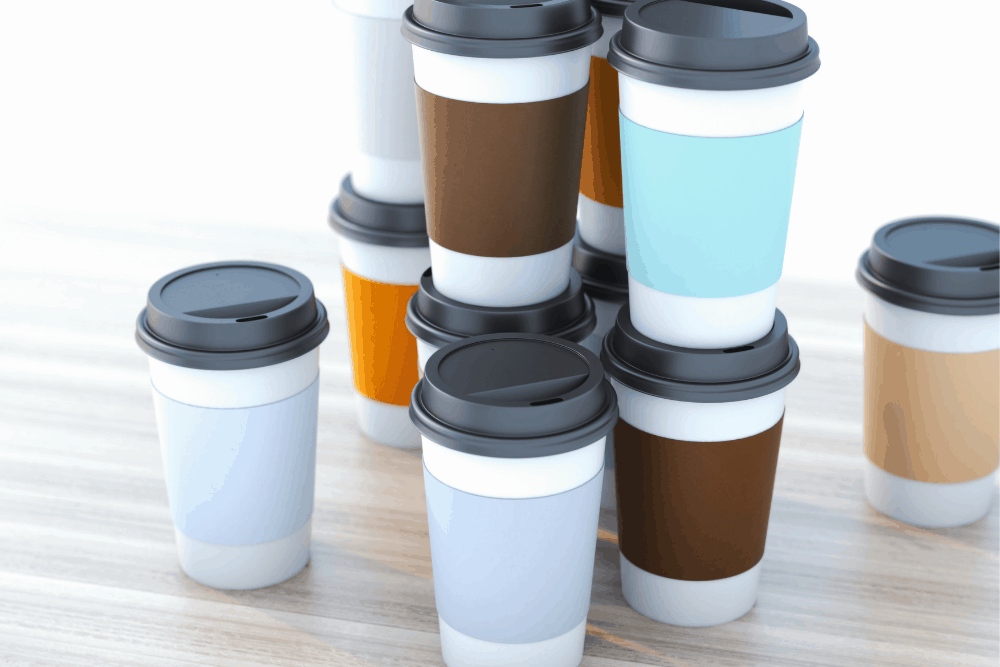
Disclosure: This post contains affiliate links, which means if you make a purchase through these links, we may receive a small commission at no extra cost to you.
From household items to food storage and beyond, plastic features prominently in our daily lives. Although lots of plastic items come with recycling codes stamped on the back, the reality is that only 9% of the world’s plastic gets recycled. It can take up to 1,000 years for plastic to degrade.
Not only are our landfills overflowing with plastic, but marine environments are littered with plastic – an estimated 18 billion pounds of plastic flows into the ocean every year.
While it may seem hard to part with some of your favorite products, there are sustainable options on the market that are just as good, if not better than what you’re already using. You really can reduce your plastic footprint by making eco-friendly purchases.
While it may seem obvious that something like a plastic water bottle can be replaced with a reusable stainless steel version, there are many sneaky sources of plastic that you may be buying and consuming without realizing that they are made with plastic.
Below are some surprising sources of plastic in 8 everyday items that you may use, and eco-friendly swaps to help you reduce your plastic footprint.

Bandaids
Bandaids are generally not something we can do without, but it’s a bummer that most bandaids are made from plastic and take a very long time to break down. The adhesive sheet of a band-aid is usually made from PVC, polyethylene, or polyurethane.
One good way avoid plastic in bandaids: Purchase eco-friendly bandaids that are 100% biodegradable. Patch Eco-Friendly Bandaids are a single-use planet-friendly alternative to plastic and latex adhesive bandages. They are made from 100% certified bamboo fiber and are 100% biodegradable. From the strips to the gauze to the adhesive, Patch Eco-Friendly Bandaids are fully compostable. Even the cardboard packaging is recyclable and biodegradable.

Chewing Gum
Most people don’t think of plastic when they chew a stick of gum. But chewing gum is primarily made from plastic with added flavorings and synthetic dyes. The chewing gum industry is big business (worth about $19 billion a year), and each year gum generates over 250,000 tons of waste.
One good way avoid plastic in chewing gum: Purchase plastic-free gum like Simply Gum. They use a natural tree-sap (chicle) base, and the gum is natural and biodegradable. Simply Gum is not only better for you, but also for the environment.

Teabags
Did you know that one mug of tea can contain billions of microplastic and nanoplastic particles? Researchers at McGill University in Canada removed tea from 4 traditional teabags and steeped the teabag envelopes in hot water. After steeping and removing the teabag envelopes, the hot water was measured for plastic particles, and plastic levels were in the billions! A plastic polymer is used to seal the bags as well as keep its shape when it’s dunked into hot water. You may think your tea bag is compostable, but the plastic in it means that it won’t completely decompose.
One good way avoid plastic in tea bags: Purchase tea bags from a reputable tea company that doesn’t use plastic in their teabags. Check out my blog post on 10 Brands of Tea That Are Plastic-Free and make the switch now. Or, try using loose leaf tea.
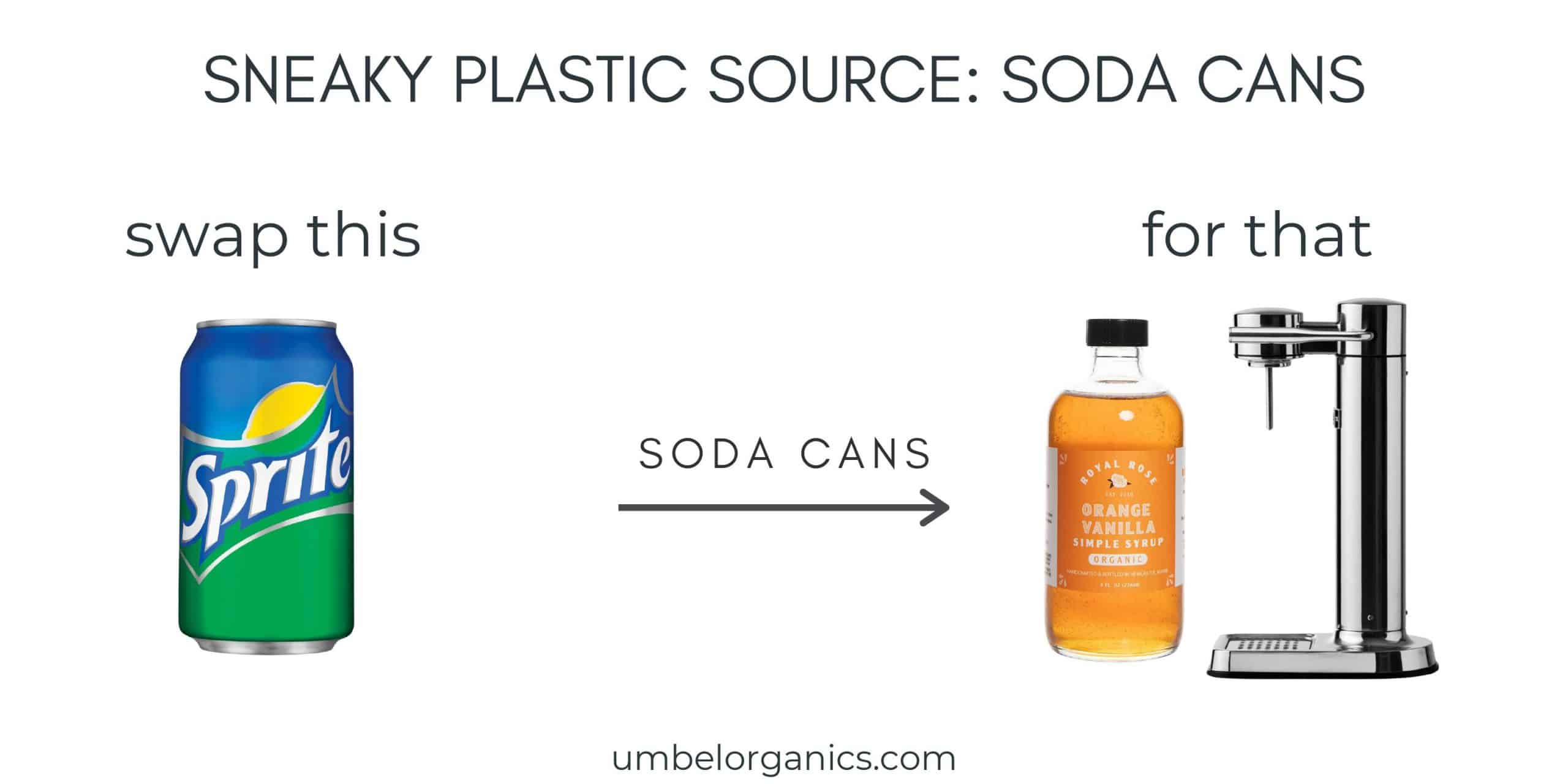
Soda Cans
Soda cans are lined with a plastic layer to keep the acids in your drink from corroding the metal can. Not only does the plastic lining protect the beverage from having an undesirable flavor, it also protects the can from corrosion. Manufacturers use a plastic liner that usually contains BPA, an endocrine disrupting compound, or a similar alternative like BPS. Aluminum cans take about 200 years to break down in a landfill.
One good way avoid plastic in soda cans: Make your own fizzy drinks by purchasing a sparkling water maker. The Aarke Carbonator has a stainless steel body, but the water container is plastic. The Soda Stream Aqua Fizz Sparkling Water Machine has a plastic body, but the drink container is glass. With either machine, you can make endless amounts of sparking water without throwing away cans every time. Add simple syrup or a squeeze of fresh lime for flavor. Royal Rose Orange Vanilla Simple Syrup comes in a glass bottle, is made with organic ingredients, and there are over 20 available flavors.
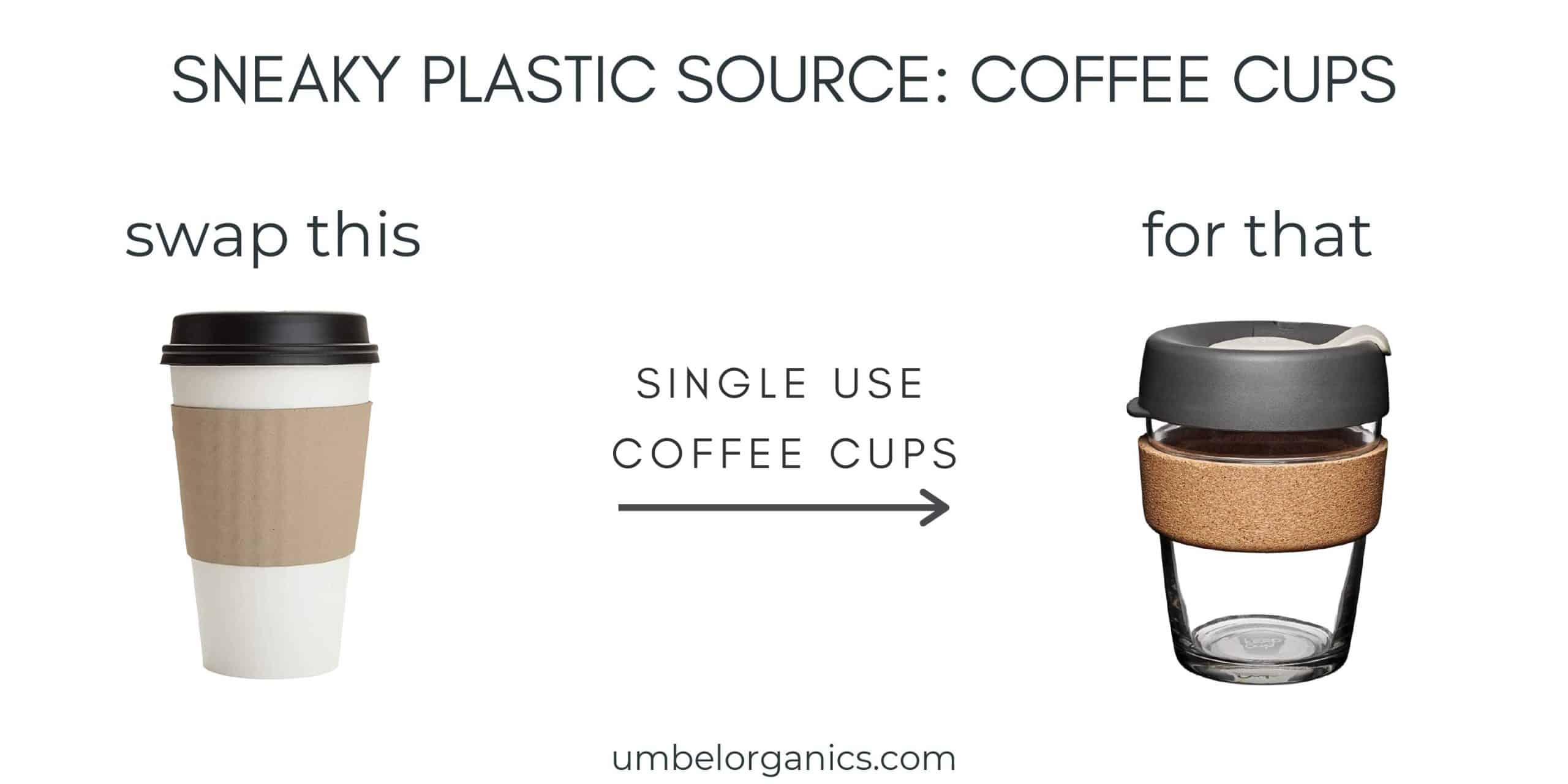
Single-Use Coffee Cups
Without a plastic lining, coffee would soak through a paper cup pretty quickly. Most of these to-go cups are lined with polypropylene, #5 plastic, and are not accepted through curbside recycling. Even if they are, the recycling center must separate the plastic lining from the paper cup, and that’s not an easy task.
One good way avoid plastic in disposable paper coffee cups: Bring your own reusable cup to your favorite coffee house. The KeepCup is a sturdy reusable glass cup with a cork band, and it’s designed for on-the-go use.
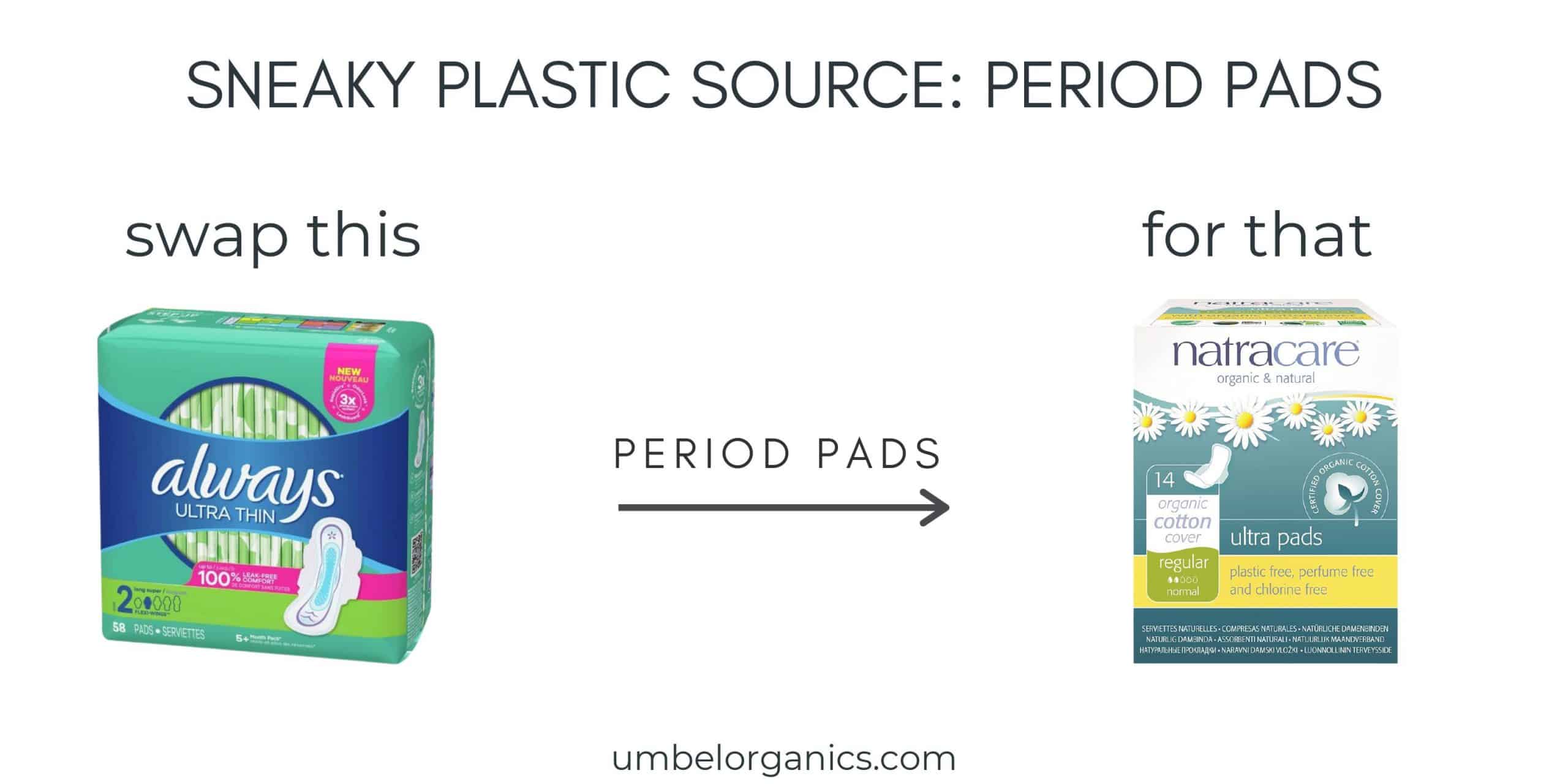
Period Pads
You might not realize it, but a conventional period pad contains a good amount of plastic. The leak-proof layer contains either polypropylene or polyethylene, and the absorbent core usually contains polyester fibers.
One good way avoid plastic in period pads: Switch to a brand that does not use plastic in any part of the pad. Check out my blog post on organic cotton period pads. I love that Natracare Organic Period Pads have a 100% certified organic topsheet, an ecologically certified cellulose pulp absorbent core, a plant starch backing and a non-toxic adhesive. For an even more eco-friendly alternative, try washable cotton pads, like Imse Reusable Organic Cotton Period Pads or Bambody Period Underwear.
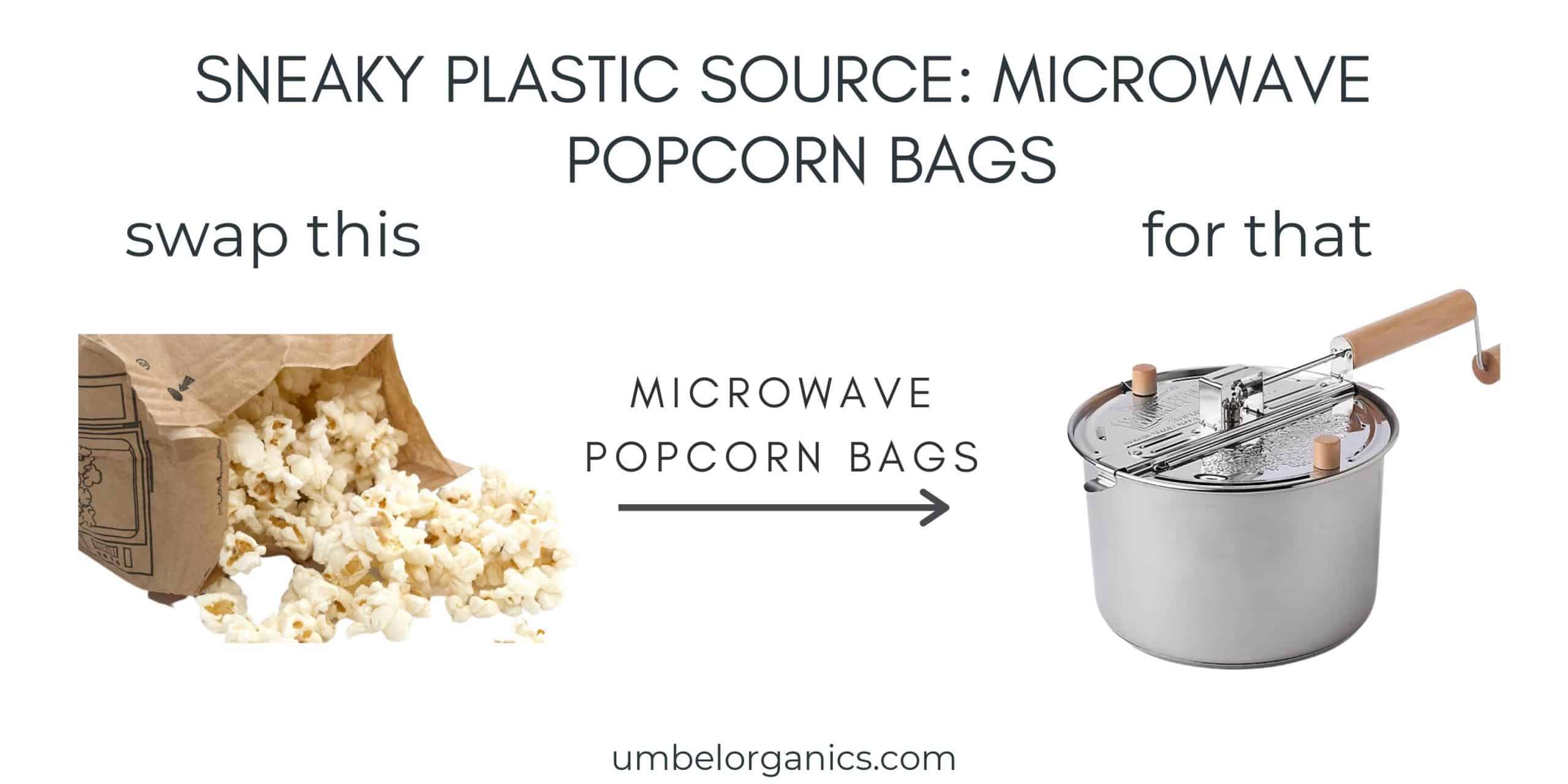
Microwave Popcorn Bags
Microwave popcorn bags are not recyclable. Most of these microwave popcorn bags are lined with plastic and coated with a non-stick PFAS surface. The bag can take hundreds of years to break down in the environment, and the PFAS chemicals leaching from the bag can hitch a ride on your popcorn and cause possible adverse health effects.
One good way avoid plastic in microwave popcorn bags: Pop the kernels on the stovetop. The Whirley-Pop Popcorn Popping Kit has a stainless steel popper and a patented stirring mechanism for perfect popcorn without the plastic.

Makeup Wipes
Makeup wipes may be convenient, but they contain plastic, and don’t break down for about 100 years in a landfill. If you’re using 1 or 2 makeup wipes a day, that’s going to add up quickly. Most makeup wipes are either made from plastic or contain a mix of cotton and plastic fibers such as polyester, polypropylene, or rayon.
One good way avoid plastic in makeup wipes: Use reusable wipes that you can wash right in the washing machine and use again and again. Marley’s Monsters Organic Reusable Facial Rounds are handmade in the USA from 100% organic cotton. Another bonus? You’ll save money by reusing cotton rounds.

More Inspiration For A Plastic-Free Home



